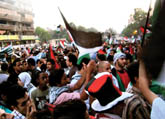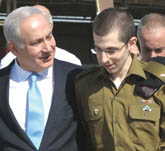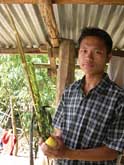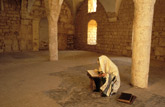×


We have detected your country as:
Please click here to go to the USA website or select another country from the dropdown list.

{image_1}Legend has it that a scorpion and a camel were sitting on the shores of the River Nile one hot summer’s day. The scorpion asks the camel to allow him to sit on his hump in order to ride to the other side. Scorpions, as is commonly known, can’t swim. Reluctantly the camel agrees. Half way across, the scorpion stings the camel. Realizing they’re now both going to drown, the startled camel asks the scorpion, ”Why?” With a grin, the scorpion answers, ”Welcome to the Middle East.”
Continue Reading »
{image_1}One of Gilad Shalit’s comments during his first interview upon his release was that he had imagined himself in captivity for many more years. And he was not alone. Although there was tremendous momentum worldwide to secure his freedom, many, if not most, authorities on the subject viewed it as a hopeless situation.
Continue Reading »The Jewish people are unique among all the peoples of the earth. Their covenant relationship with God sets them apart, as does their adherence to the Torah (Gen.–Deut.). However, their ability to maintain their Jewish identity, the tenants of Judaism, and even unity as a people during millennia of dispersion and relentless religious persecution is unparalleled in human history.
Continue Reading »
{image_1}We are living in extraordinary times. The hand of G-d in the affairs of man is evident, and there is no greater proof of this than the ingathering of the exiles from the four corners of the earth. “Bring My sons from afar, and My daughters from the ends of the earth,” declares the L-rd (Isaiah 43:6). Over the past sixty years, since the founding of the State of Israel, that is precisely what He has been doing, as Jews from Russia, Ethiopia, and elsewhere have all heard the sound of the great shofar [ram’s horn] and come to Jerusalem.
Continue Reading »
{image_1}There are quilting bees and spelling bees, but now there’s a Bible Bee—the Holy Land Bible Bee, the product of Israeli ingenuity for English-speaking Christians. The term that the contest has been given, “bee,” is quite fitting, as its origin may come from the Old English word “ben” for “prayer.” But for North Americans, it was a popular term used during colonial times, when spinning bees, corn husking bees, apple bees, and logging bees were common. They were get-togethers of the larger community for a common purpose that usually included a social event.
Continue Reading »
{image_1}No one can say when the next war will come, but when it does, Israel’s main cities will almost certainly come under sustained bombardment by thousands of tons of warheads. That scenario has the military commanders responsible for protecting its citizens in a frenzy of preparedness. Across the country this summer, Israelis were subject to home front drills, sending people scurrying into shelters, sirens blaring and gas masks distributed. Defense planners want to use underground parking garages and road tunnels as massive bomb shelters.
Continue Reading »
{image_1}There is a word in Hebrew that is used often in certain segments of Israeli society that denotes a very important but strangely illusive concept for the modern state. The word is hasbara, and it refers to Israel’s public diplomacy efforts. It is a noun that actually means “explanation,” and many from Israel, including her Christian friends, are engaged in what is called “doing hasbara.” It is traditionally one of the few things that the nation of Israel has not excelled at.
Continue Reading »
{image_1} In recent years, the concept of genocide has found its way into the Palestinian propaganda machine with dozens of such accusations being leveled against Israel from journalists, politicians, and clerics. Israel has been called a Nazi, or genocidal, state that kills children, thrives on the blood of its enemies, and is bent on the destruction of the Palestinian people. The gravity of such charges requires a closer look at the context of the allegations as well as a clear understanding of exactly how the international community has defined genocide.
Continue Reading »
{image_1} The first week of December 2010, a raging fire, lasting 82 hours, swept across the Carmel mountain range overlooking Haifa. Yemin Orde, a youth village which is home to 500 Israeli students, was directly in its path and was quickly evacuated. Staff returned but when they saw a fire ball approaching, they too left with the feeling that everything would be burned down. In the end, 40% of the buildings were destroyed, including two dozen houses (for 58 staff members), classrooms, the library, and dormitories. For a month, students were housed elsewhere.
Continue Reading »
{image_1} Prayer is a precious privilege and a sacred obligation, one that should be exercised, cultivated, and developed by every believer and community of faith. A study of Jewish prayer can illuminate and enrich our understanding and practice of this “service of the heart.”
Continue Reading »All logos and trademarks in this site are property of their respective owner. All other materials are property of Bridges for Peace. Copyright © 2025.
Website Site Design by J-Town Internet Services Ltd. - Based in Jerusalem and Serving the World.